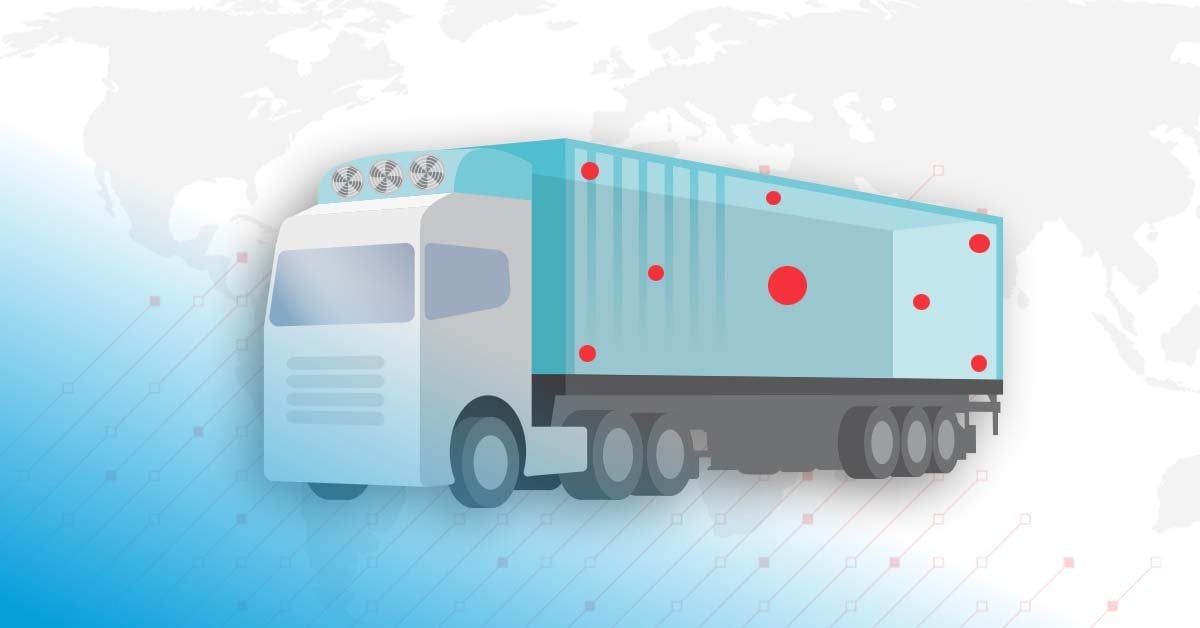There are many regulations for good business practices (GxP), and even when the guidance is contradicting, all sources agree on one topic. If you work in the pharmaceutical sector, you should comply with the good manufacturing practices (GMP) and good distribution practices (GDP); you must produce, handle, store, and transport your products in qualified facilities with qualified equipment, using validated processes. This guide explains everything you need to know about the validation, qualification, and mapping processes.
According to GMP and GDP, validation is a documented and mandated process that guarantees the anticipated results of a manufacturer. All functions relevant to quality must be validated. In a nutshell, the first part of the validation is to define the expected results and the acceptance criteria. The second part is to verify and document that the process delivers the expected result by defining test methodology. The third part is to ensure continuity, repeatability, and accuracy of the validated process often captured within standard operating procedures (SOP) and ongoing training plans.
What Is a Qualification?
Definition of qualification for facilities and equipment: the final series of inspections and tests to ensure that critical requirements necessary for related product quality are satisfied and that documents and procedures necessary to properly operate and maintain the system are in place.
Qualification is the process of proving that facilities and equipment work properly to deliver quality results, which fulfil the intended purpose in accordance to the user requirement specification (URS). Apart from regulatory compliance and stipulation, qualification is paramount to ensuring the preservation of product quality, continuity of supply, and a healthy, effective outcome for consumers and patients.
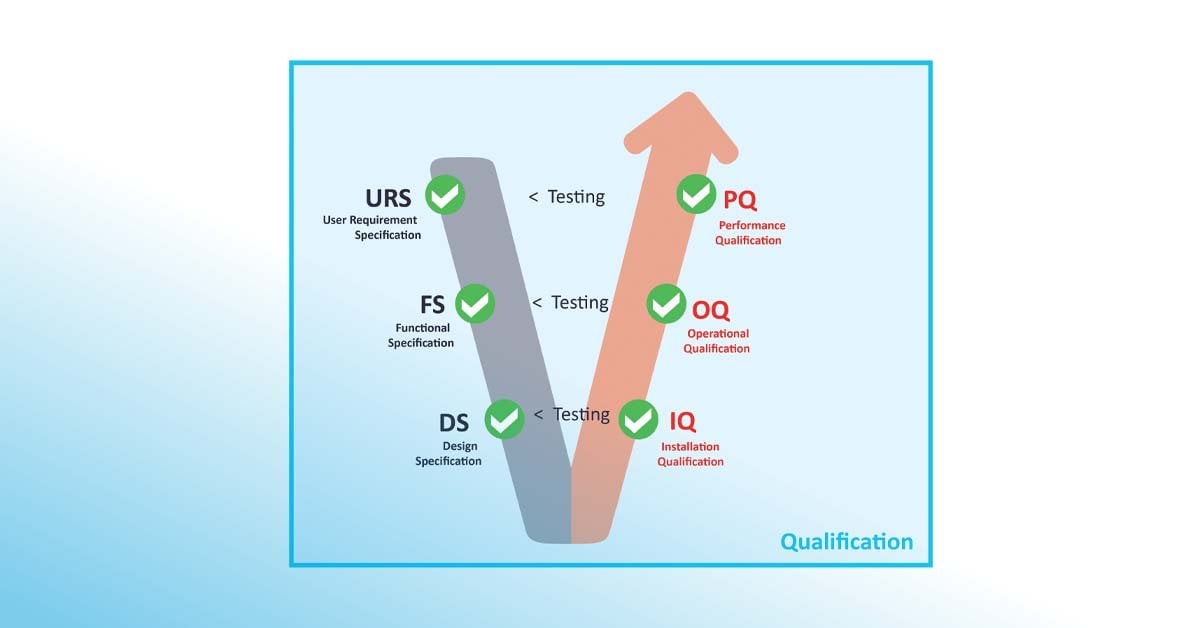
According to the GAMP® 5 V-shaped model framework, the qualification plan (QP) is developed to define the series of actions and analyses including functional specification (FS), design qualification (DQ), risk assessments, implementation, installation qualification (IQ), operational qualification (OQ), and performance qualification (PQ). The result of the qualification process is captured, recorded, and approved within the qualification report (QR). A series of tests should be adapted at each stage to ensure that any issues identified are completely resolved.

Warehouse Qualification
Equipment Qualification
What is Temperature Mapping?
It’s a scientific fact that cold air is denser and heavier and pushes the warmer, lighter air upward. Displacement and disparity of air represents an unknown risk to temperature sensitive products manufactured, stored, and transported in controlled environments, whether it be a warehouse, a container, a refrigerator, or a freezer. Temperature mapping is the process of identifying uncertainty and volatility to a known entity by measuring and documenting the temperature at multiple locations inside a chamber, otherwise known as thermal distribution. Temperature mapping identifies the areas that are within the safe parameters for storing your product.
Preparing for mapping and producing the analysis summary can be an involved and time-consuming process. The mapping plan and protocol incorporates the risk assessment to define and to rationalize the placement of temperature data logging devices. It’s important that the devices used are manufactured through validated processes. They should be calibrated at multiple points to cover the anticipated environmental range. The number of measurement points required are set out in accordance with volumetric calculations. A mapping study is conducted over a predefined period in accordance with regulatory guidance and globally recognized standards.
The mapping study observes the temperature in specific locations within the space to create a mapping grid. The mapping grid observes two principles:
- A 3D network with constant intervals in the X, Y, and Z-axis
- Extra mapping points near the air outlets, which are the expected hot and cold spots
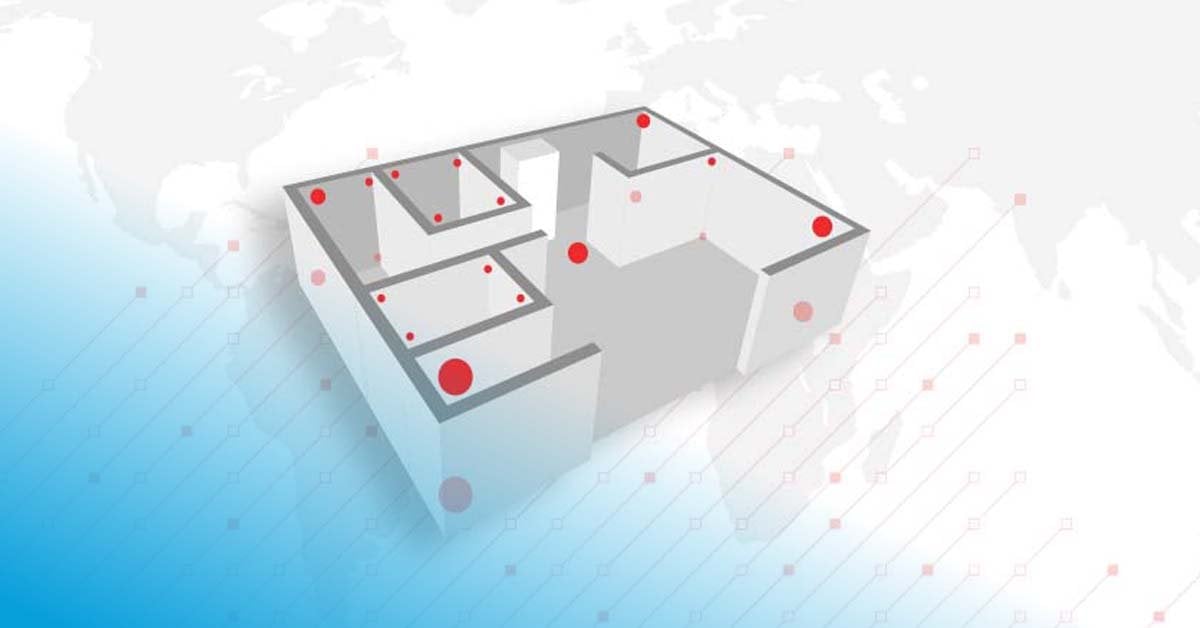
Mapping setup: Sensors are installed and configured, marked visibly, and placed at the appropriate mapping points.
The resulting purpose of the mapping analysis and summary report is to pass or fail equipment or areas based on determination of hot and cold spots, including consideration to the intended range and acceptance criteria. Average temperature conditions and sometimes mean kinetic temperatures (MKT) are also analyzed to identify less obvious risks or trends. These factors are captured in the summary report and should be accompanied with relevant recommendations and ongoing action plans, like where to place monitoring loggers within a chamber for continuous monitoring.
For temperature-controlled equipment and areas, mapping analysis forms part of the qualification plan. Often mapping is carried out during multiple stages of the qualification process— typically during IQ, OQ, and PQ phases. Mapping is the examination and evaluation part of qualification, providing you with the data for trends, simulated failures, and thermal reaction times to assess. Mapping during qualification often involves varied product loads inside the chamber under study, starting off empty and moving towards a typical operational load.
A mapping study defines the behavioral pattern within the room, while the qualification study follows through with a detailed analysis to show the design and operations match the expected results.
What Are Formal Requirements for a Qualification?
There are no exact formal requirements. So, whosoever wants to perform the process is free to choose what form and document structure to use. However, you should observe good documentation practices. Use clear document naming, versioning, and change the history and ownership of the document.
Why and What to Qualify
According to GxP validation guidelines, you must qualify all equipment impacting a patient's safety and authenticate its processes.
Some of the relevant equipment includes:
- Temperature monitoring equipment
- Containers and transport boxes
- Trucks or van fleets
- Warehouses
- Networks
In the pharmaceutical sector, the qualifying process differs depending on the equipment and space. In some instances, specialized engineering firms conduct the qualification. ELPRO uses the GAMP® 5 V model as a guide, the steps 3, 4, 5, and 6 being the qualification portion.
- Define the purpose of your facility – is it a warehouse or a cold room?
- Perform an analysis of structural and operational risks.
- Design Qualification: Define high-level design requirements, like power supply and floor plans.
- Installation Qualification: Check to establish if the facility is built as designed.
- Operation Qualification: Conduct an operational qualification by mapping the facility when empty.
- Performance Qualification: Perform the second temperature mapping during normal operations with a full load.
Here are some valuable examples of how to conduct qualification and temperature mapping in various circumstances:
How to Qualify and Map a Refrigerator
Qualifying a refrigerator is straightforward because it is a freestanding gadget. Since these appliances operate in a room or environment with controlled temperature, risks are limited to air outlet blockage, power outage, improper loading, and door opening. In comparison to more intricate devices and personalized equipment, there are minimal risks.
Companies usually operate numerous refrigerators or freezers, so the qualifying processes are often done in the following steps:
- Assemble the refrigerators into homogenous categories under the same supplier, model, and size.
- Apply the V model to each group.
- Perform the design check for a single refrigerator per cluster group by confirming its model, airflow, and power supply specifications.
- After mapping out a single refrigerator in each group, the remainder can skip the step and proceed to performance qualification.
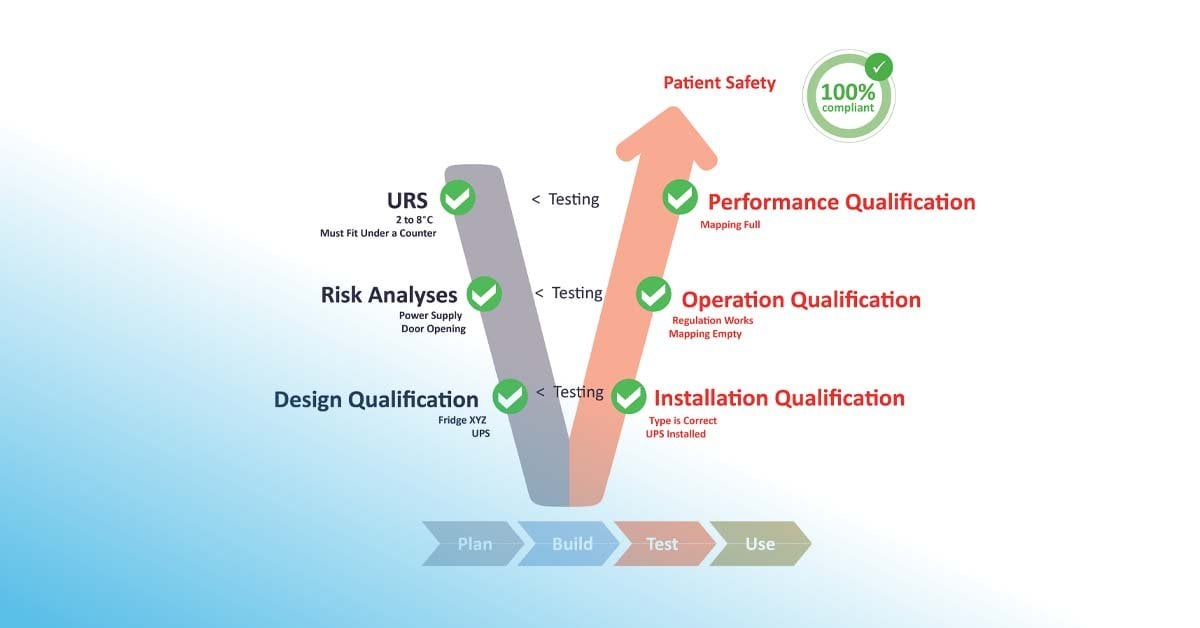
How to Qualify a Warehouse, Cold Room, or a Storage Facility
Storage facilities, cold rooms, and warehouses are not the typical off-the-shelf refrigerators. Each product suits its industry through customized control systems, designs, and airflow. However, such facilities have many variations, each having different features and applications that directly affect the strategy choice.
Warehouse
Type: Large room/hall with open space or high racks
Typical Temperature Range: 2 °C to 8 °C or 15 °C to 25 °C.
Implications on Qualification & Mapping: Warehouses typically have outer walls directly exposed to ambient conditions and seasonal effects. Insulation of the building and the absence of windows and other openings are vital. Since there is influence from ambient conditions, winter and summer mappings are necessary. Same applies for the loading dock.
Cold Room
Type: Smaller room/hall with open space or racks.
Typical Temperature Range: 2 to 8 °C or -20 °C
Implications on Qualification & Mapping: Cold rooms are typically rooms inside a building and the walls have no direct exposure to ambient conditions and seasonal effects. Often there is no need to perform a separate winter and summer mapping.
Loading Docks and Other Facilities
Type: Small room with racks
Typical Temperature Range: 15 °C to 25 °C or 2 °C to 30 °C or <40 °C
Implications on Qualification & Mapping: The framework and complexity of the qualification and mapping of other facilities will be defined by the stored/handled products, their required label condition, and their length of stay within the facility.
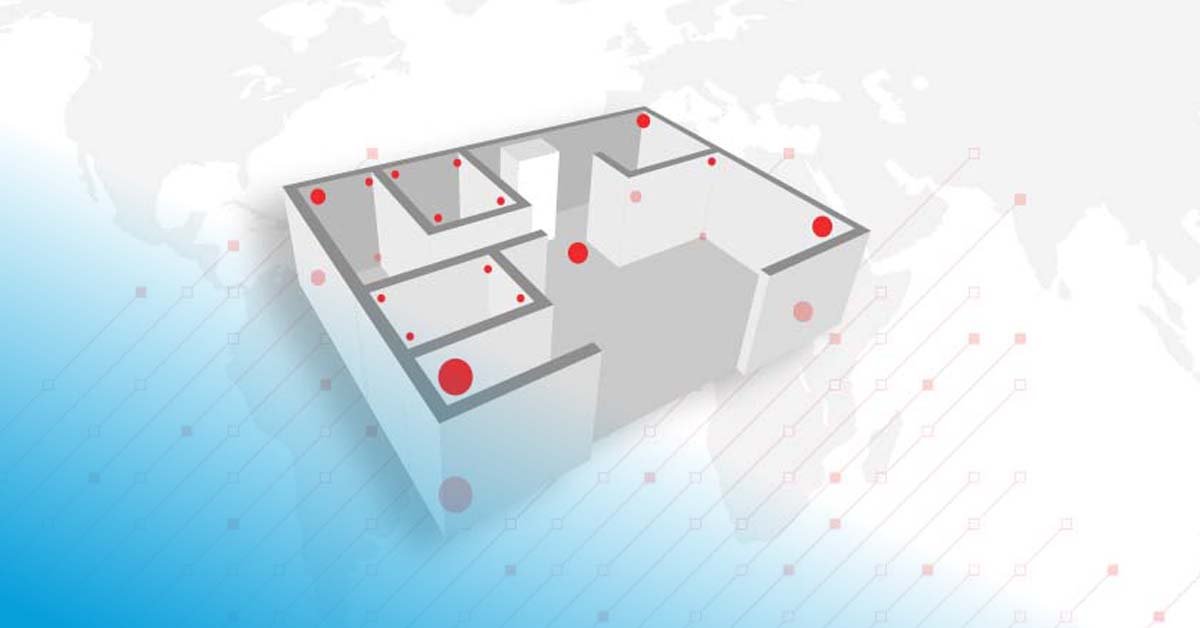
How to Qualify and Map a Truck or Van
Since companies usually operate many trucks and vans as fleets, the qualifying processes are performed in fleets as follows:
- Gather the fleet of trucks and arrange them into homogenous groups.
- Apply the V model to each group.
- Perform design qualification in the cluster group by checking a few defined points on one truck/van , like the model and configurations.
- Since one truck or van per cluster group has already been mapped, it is now possible for the remaining trucks/vans of the same group to leave out the "dry run" qualification and to directly conduct a performance qualification (Mapping of the full truck) during normal operation. Of course the mapping should be performed with data loggers which are calibrated and compliant.
How to Qualify a Transport Box or Container
Qualifying a transport box or container is not as easy since the object to be qualified moves around in an uncontrolled environment. First, clarify its purpose and shipment method, whether via road, air, or water. Take into consideration the transportation time and the temperature range at the beginning, during transit, and at the destination.
There are two ways to confirm the appropriate ambient temperatures during GxP validation:
- Use empirical data to arrange the shipment into segments and define the extreme seasonal changes.
- Map the ambient temperatures by effectively measuring temperatures in specified routes.
There are differences between passive insulated boxes and active heating/cooling containers. Here is what you should know about the two:
Passive Insulated Box
- Technology Used: Thermal packs filled with phase change material (PCM) having a defined melting point (5 °C melting point for 2 °C to 8 °C shipments) and insulation materials such as vacuum panels.
- Process at Origin: Phase change material must be pre-conditioned and have the right temperature when loaded. To ensure the promised performance, the box must be built-up exactly as designed: product surrounded by one layer (minimum) of PCM, surrounded by one layer (minimum) of vacuum panels, held together by a cardboard box.
- Process During Shipment: Ensure the shipment is not exceeding the defined shipment lengths. For example, if the box is built to keep temperature for 72 hours, a longer shipment time could result in damaging the goods.
High-level Risk Appraisal: The highest risk is a packaging error (e.g., wrong conditioning of PCM). As soon as a shipment is on its way, the solution is very stable and there are only minimal risks.
Active Containers
- Technology Used: Insulated container with air ventilation, heating and cooling unit (typically compressor cooling and electrical heating), and battery including a charging unit.
- Process at Origin: The battery must be charged before loading and the right set temperature must be defined.
- Process During Shipment: Re-charge the unit at hubs and airports. Prevent manipulation of the set temperature or door openings.
High-level Risk Appraisal: While active containers are easy to load, there are significant risks during shipment involving human error (e.g., no recharging) and mechanical failure. Heating and cooling containers consist of hundreds of mechanical and electronic components which have the potential to fail.
Once you choose the container and define its purpose, you can start the qualifying process by applying the V model steps, as explained earlier.
How to Validate a Transport Route or Network
GxP validation of a transportation route or a network begins by qualifying all the equipment elements; you enable the location of the right subjects within a network. To find the proper subjects, you must cluster the equipment, such as boxes, fleets, and containers.
Clustering criteria of the transport elements include:
- The transport modes
- Trip lengths
- Secondary packaging(e.g., no secondary packaging needed, thermal cover, insulated box or active container)
- Origin and destination
- Climate seasons and zones
After clustering the network into similar categories, you can perform a high-level risk analysis. Cluster-specific risks should be described and evaluated. The higher the risk rating, the more focus must be given when defining mitigation measures. After performing the clustering and risk analysis, each “cluster element” must now be qualified. The following table shows an overview of potential clusters, risks, and mitigation strategies:
/Qualification%20and%20Mapping/Risk%20Strategy.png?width=855&name=Risk%20Strategy.png)
Conclusion
Now you know how to qualify, validate, and map different types of equipment and spaces to comply with the regulations of the pharmaceutical industry. Using excellent business practices, you can safeguard your customers' rights and boost profitability. It would be best to handle all the complex processes by working with ELPRO for GxP validation services and other data monitoring solutions. Our experts will consider your niche to ensure you always remain compliant. Contact us today to learn more.
Let's Talk About Temperature Monitoring
Schedule a call with our experts today. We're here to support your cold chain monitoring project and help ensure it is successful.



